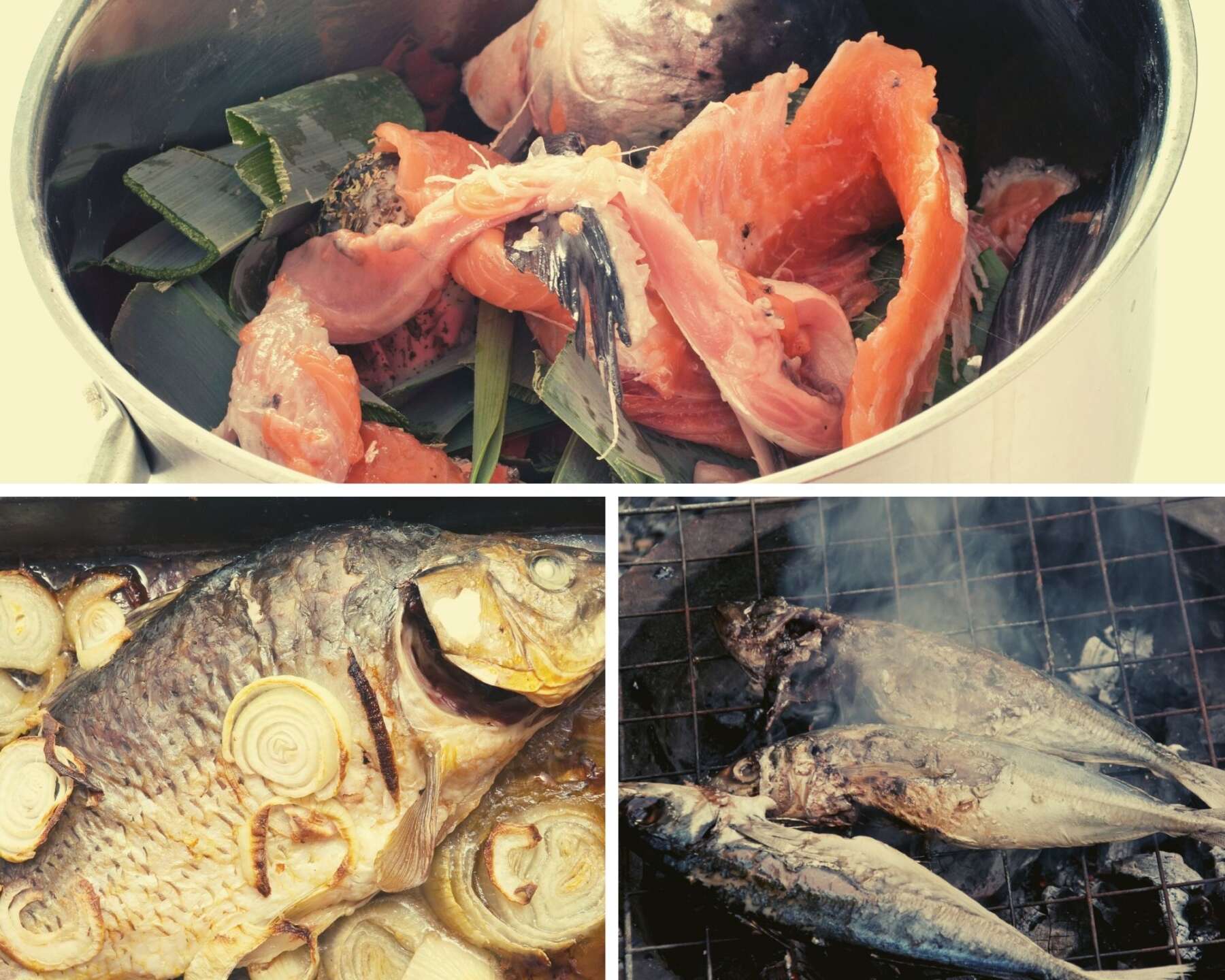
Fish Cooking Methods
Our consultant chef Siobhán Devereux Doyle takes us through the different cooking methods that can be used for fish. We will see how each is used to achieve a variety of textures and flavours - each of them nutritious and delicious!
Fish Cooking Methods
Ever since my training days, there have been new additions to methods of cooking of fish, for example some restaurants cook in a water bath or bain-marie. This is where the fish is placed in a sealed bag and then into a warm water bath and cooked slowly. This very gentle method keeps the fish moist and preserves all of its delicate flavours.
Other traditional methods of cooking fish are poaching, steaming, braising, baking, grilling, BBQ, stewing, sautéing (pan frying) and deep frying.
Fish can also be smoked and there is a cooked and non-cooked process of smoking which we can look at in more detail in a dedicated article.
Poaching: Fish can be poached in a deep or shallow liquid. I always use a “Court Bouillion” for poaching. This consists of water enhanced with black peppercorns, white wine, bay leaf and lemon. You simply put all the ingredients in a pot and bring the liquid to a simmer. Place the fish into the hot liquid and simmer until it is cooked. I normally cook salmon this way because it keeps it lovely and moist. You can also add other ingredients to your court bouillon such as chilies, lemongrass or paprika if you choose. Thick pieces of fish such as Cod, Salmon, Hake and Monkfish are most suitable for this type of cooking.
Another fish that you probably remember being poached at home when you were young was Smoked Coley or Fresh Smoked Haddock. The poaching liquid used in this instance is milk, onion, bay leaf and black peppercorns. The stock from this is then usually used as a base for a white sauce to accompany the fish.
Steaming: This method is a very healthy way of cooking. You can also flavour the water with herbs and citrus, the scent of these will go through the fish from the steam. If you do have a steamer, all you have to do is put water in a sauce pan cover it with a plate, place fish on plate, season fish and cover with foil. All fish are suitable for steaming.
Braising: This method involves placing the fish in a covered buttered braising pan, either directly onto a bed of herbs and vegetables such as celery, carrots, onion, or on a perforated tray over them. Wine or stock, or a combination of both is often used as a braising liquid in the bottom of the pan and the pan must be covered with a tightly fitted lid. Very slow oven cooking with frequent basting, (spooning the juices over the fish) is an essential part of the process. Examples of fish suitable for this method of cooking include Whole Turbot, Brill and round oily fish such as Salmon.
Baking: This method of cooking fish is extremely versatile, and fish can be stuffed, topped, marinated or dry spiced. If you are baking fish on its own, make sure to put butter or olive oil on it to stop it from drying out. I have used a lot of different toppings for fish over the years and have found that mayonnaise as a base, is one of the best ones for keeping the fish moist.
Grilling (BBQ): For grilling make sure the fish has been brushed with oil and seasoned before placing under the grill. Cook evenly on one side and then turnover to cook the other side. Ensure that your grill is not set at too high a temperature, as this will burn the fish on the outside and it will be under cooked in the center. Fish can also be grilled on the BBQ for extra flavour, simply flour the fish and brush with oil, this will give the fish a lovely crisp skin.
Another tip for the BBQ is to wrap the fish in tin foil with seasoning and some lemon slices and place it on the BBQ to cook, turning to cook both sides, the fish will steam itself inside the foil. You can also make some kebabs with fish and marinade them for cooking on the BBQ.
Stewing: There are several national and regional fish stews, using a mixture of different fish and sauces, some are cream based others are tomato based. For this cooking method the base sauce is most important, when that is made, add your fish and cover with a lid. Stew gently until the fish is cooked. Some of the most well-known fish stews are Bouillabaisse (French), Rarzuela (Spanish), Ghalich Mahi (South Iranian)
Sautéing/Pan-frying:The term “meuniére” is used to denote fish cooked using this method, because the fish is usually lightly dusted in seasoned flour then cooked in a little oil or butter, sometimes both. Suitable fish types for this method are small round or flat fish and fillet or supreme of larger fish.
Deep frying: Deep frying involves submerging the fish in a deep pan of hot oil. Fish must be coated before frying, using one of the following combinations
- Flour, egg wash and bread crumbs
- Milk and flour
- Flour and batter
- Flour and beaten egg
Whole small round and flat fish and supremes, fillets and goujons of larger fish are suitable for deep-frying.
Whatever way you choose to cook your seafood - enjoy!
Siobhán








